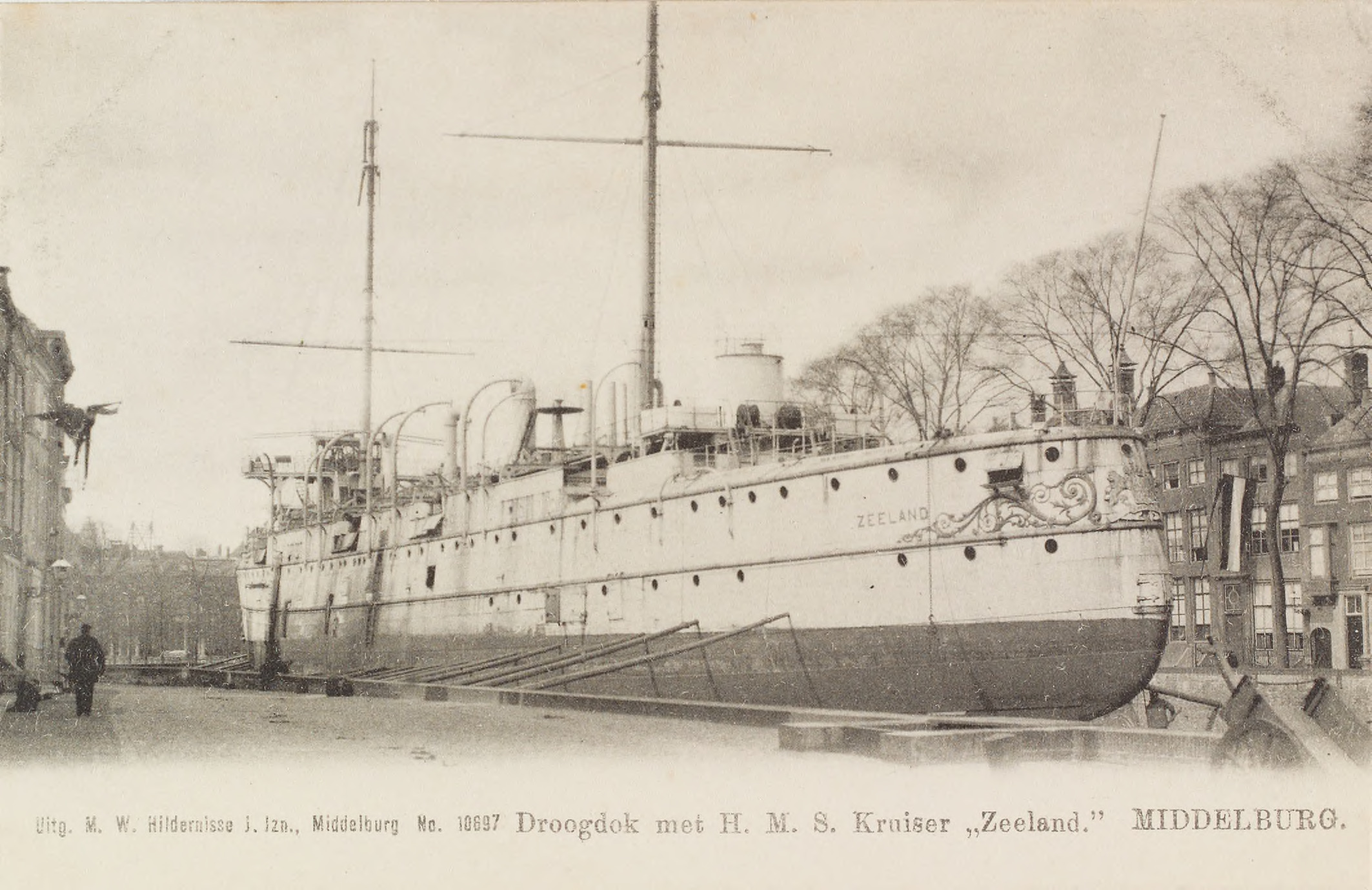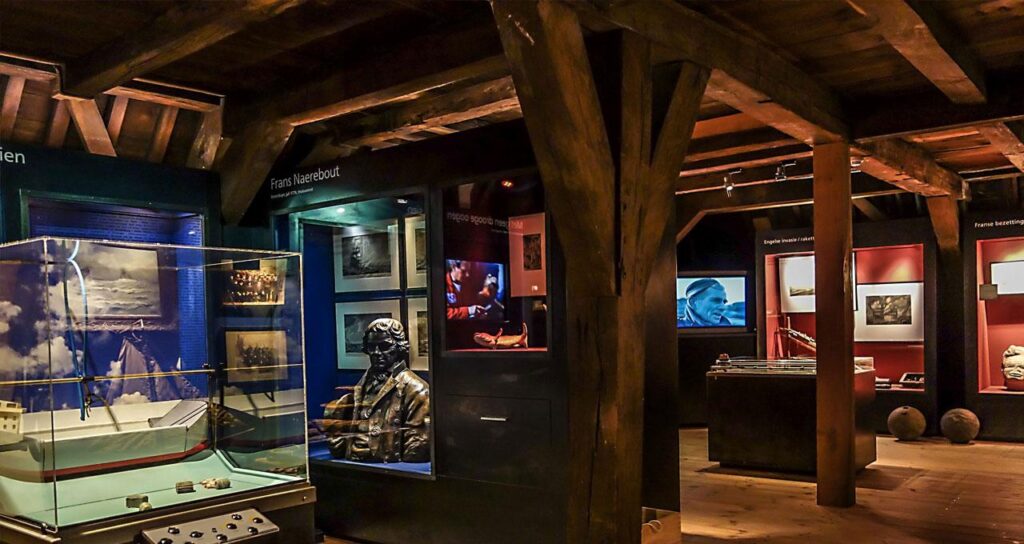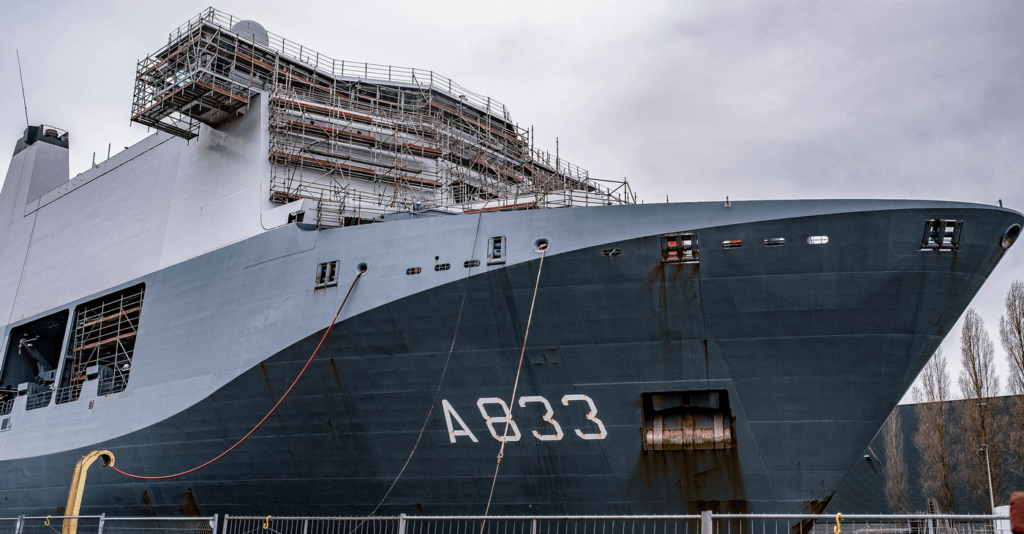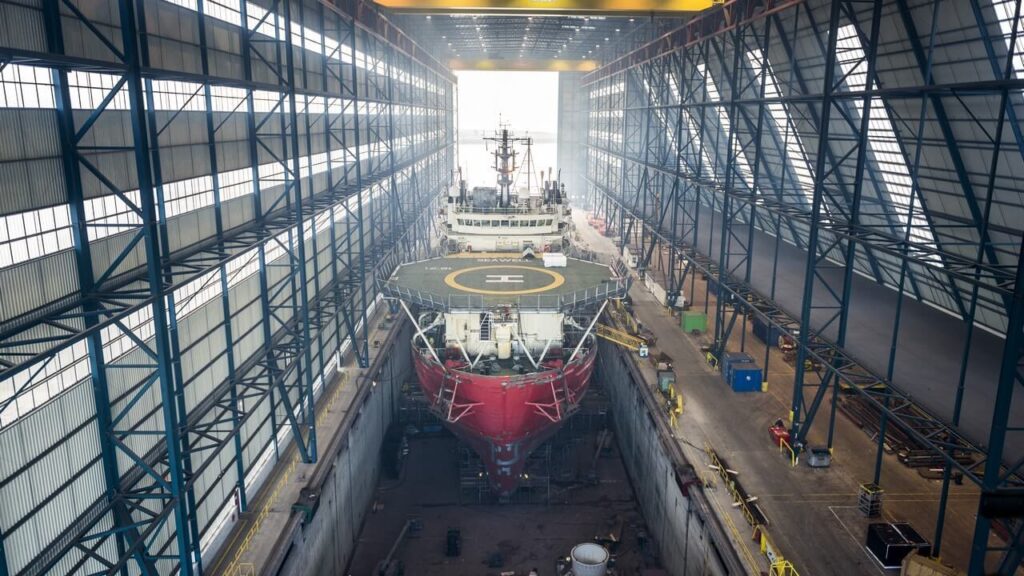Vlissingen Navy Drydock is a dry dock in Vlissingen. It is the oldest dry dock of the Netherlands, and is now a tourist attraction known as Dok van Perry.
Current Situation as Dok van Perry
In 2010 restoration of Vlissingen Navy Drydock began by digging it out. In 2013 the renovated dock was reopened by Pieter van Vollenhoven. In August 2013 the Tres Hombres was the first ship to use the reopened dry dock. The plan is to make the dry dock the permanent home of the museum ship minesweeper Mercuur in 2023.
The restored dry dock is currently called Dok van Perry in Dutch. The name surfaced in the media somewhere in the early 2000s, and goes back at least to 2005.
Context
Docking in the 17th century
In the 17th century, being in ordinary was the normal condition of a warship. It meant that the warship was stripped of rigging and guns, and did not have a crew. A wet dock was the ideal location for a ship in ordinary, because it shelters a ship from the waves and tides. At the time, dry docks were a recent invention. They were found to be especially useful for inspecting and maintaining purpose built warships, the design of which had recently began to deviate from merchant sailing ships.
The wet dock
The Dutch navy was organized in 5 admiralties. Each required a suitable place to store its ships when they were in ordinary. The Admiralty of Zeeland already had a small wet dock and port since 1614. This did not suffice, because in winter many warships stood at the bottom when they were in port.
In 1687 Stadtholder William III sent a letter to the States General requesting approval for the Zeeland Admiralty to raise a loan to create a large wet dock. The reason given was that otherwise the warships of the admiralty would completely decay. The proposal was approved, and LA Cornelis Evertsen the Youngest and two engineers visited Vlissingen and Veere to determine where, and how the wet dock should be build.
The Vlissingen city government had some reservations. These centered on the removal of some private shipyards that had been founded around the existing dock, the commercial use of the wet dock, and the height of the city’s contribution. After threats that the dock would otherwise be made in Veere, the city agreed in April 1688. The council soon after also gave permission to demolish the old Rammekenspoort, that was obviously in the way. The new and much larger wet dock was started in 1687 and finished in 1693.
The Dry Dock
Location
When the first dock was completed in 1614, it was connected to a part of the city moat located where the dry dock now is. In turn the city moat was connected to the shallow harbor Pottekaai by means of a lock called Leeuwensluis, which was later replaced by a stone sluice. This sluice had two big sewers with gates, by which water could be led to clean and keep the Pottekaai up to depth. Of course, at high tide, water could also be allowed to flow in the other direction. In spite of becoming a sluice, the construction retained the name ‘Leeuwensluis’. One can suppose that this Leeuwensluis and its successor had lock chamber that enabled them to discharge so much water at once, that it had a flush effect. The 1750 map shows two sewers.
This connection made the stretch of old city moat an ideal location for the present dry dock. The traditional way to empty a dry dock was to put a ship in at high tide, and then to get rid of most of the water by letting it flow out at low tide. Of course the latter could not be done on the dock side. However, the Pottekaai was a tidal harbor, and so a dry dock at this location would allow ships to enter from the wet dock side, while using the tide from the Pottekaai side.
Design and Construction
The design of the dry dock was made by Captain John Perry in 1697. Perry (1670-1733) was an engineer later known for his book The State of Russia under the Present Czar (1716) and other works. In 1704 the decision to build the dry dock was taken, and a budget of 37,000 guilders was allocated. Construction started in 1704 and was finished in 1705.
Characteristics
The dry dock has a ship shaped form in order to lessen the amount of remaining water that had to be pumped out. This was quite relevant, because pumps were driven by a horse-mill. The maximum length of ships that could dock was 180 feet, enough for any Dutch warship. The closure was done by regular lock doors. Commercial ships could use the dock for 10 stuivers per feet for 8 days.
In the 1830s an investigation showed that the old foundation of the dock consisted of three heavy fir beams in the length of the dry dock, close to each other. On top of these and perpendicular were fir ‘kespen’. In the center these were supported by oak beams in between.





